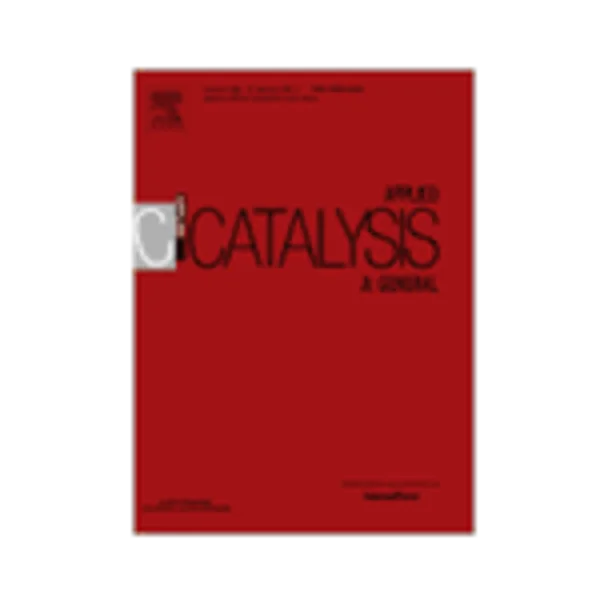-
study of the role of the catalyst and operating conditions on the sediments formation during deep hydroconversion of vacuum residue
جزئیات بیشتر مقاله- تاریخ ارائه: 1392/07/24
- تاریخ انتشار در تی پی بین: 1392/07/24
- تعداد بازدید: 950
- تعداد پرسش و پاسخ ها: 0
- شماره تماس دبیرخانه رویداد: -
the aim of this work is to investigate the influence of the catalyst and the operating temperature on the sediments formation occurring during vacuum residue hydroconversion. at high conversion, instability phenomena occurring due to carbonaceous sediments formation is a tricky issue to address and has detrimental effects on the operability of industrial units. the impact of the catalyst properties on this phenomenon has been scarcely studied. therefore, a doped f doped nimo/al2o3 catalyst has been prepared and catalytic tests performed at two temperature levels (430 and 390 °c) in order to study the effect of catalytic hydrocracking or thermal conversion on the sediment formation. for both temperature regimes, it has been observed that the amount of sediments is strongly reduced with the f-nimo catalyst compared to the undoped one and attributed to the improvement of the conversion of the sediment precursors (asphaltenes). this improvement is mostly due to the promotion of the acidic and hydrogenation functions by f addition. at 390 °c, coke deposition on f-nimo catalyst is reduced which limits the plugging of the porous volume and preserve the intragranular diffusion of large molecules in the porosity. it has been shown that deep asphaltenes conversion can be achieved using an improved hydrogenation catalyst by reducing their polarity through the removal of heteroatoms and the saturation of some aromatic rings by hydrogen addition. the residual molecules exhibit lower interactions and self association ability resulting in a lower sediment formation.the temperature has also a great impact on the sediment formation in the effluents since the decrease of the temperature favors hydrogenation and catalytic hydrocracking route which is more appropriated to produce stable effluents compared to radical chemistry predominant at high temperature.
مقالات جدیدترین رویدادها
-
استفاده از تحلیل اهمیت-عملکرد در ارائه الگوی مدیریت خلاقیت سازمانی و ارائه راهکار جهت بهبود
-
بررسی تاثیر ارزش وجوه نقد مازاد بر ساختار سرمایه شرکت های پذیرفته شده در بورس اوراق بهادار تهران
-
بررسی تأثیر سطح افشای ریسک بر قرارداد بدهی شرکت های پذیرفته شده در بورس اوراق بهادار تهران
-
بررسی تأثیر رتبه بندی اعتباری مبتنی بر مدل امتیاز بازار نوظهور بر نقد شوندگی سهام با تأکید بر خصوصی سازی شرکت ها
-
تأثیر آمیخته بازاریابی پوشاک ایرانی بر تصویر ذهنی مشتری پوشاک ایرانی (هاکوپیان)
-
مقایسه توصیفات الهه آب «آناهیتا» در اوستا با نقش این ایزدبانو در دوره ساسانی
-
صرع در کودکان مبتلا به فلج مغزی
-
بررسی اثرات تثبیت خاک توسط آهک، بر روی مشخصات تورمی خاک های متورم شونده
-
مقایسه دو روش سنگ شکنی برون اندامی (eswl) و درون اندامی (tul) در درمان سنگ های حالب تحتانی
-
شناسایی پارامتر های خاک ریزدانه با ابزار نفوذ وزنی شوئدی sws مطالعه موردی- خاک سنندج
مقالات جدیدترین ژورنال ها
-
مدیریت و بررسی افسردگی دانش آموزان دختر مقطع متوسطه دوم در دروان کرونا در شهرستان دزفول
-
مدیریت و بررسی خرد سیاسی در اندیشه ی فردوسی در ادب ایران
-
واکاوی و مدیریت توصیفی قلمدان(جاکلیدی)ضریح در موزه آستان قدس رضوی
-
بررسی تاثیر خلاقیت، دانش و انگیزه کارکنان بر پیشنهادات نوآورانه کارکنان ( مورد مطالعه: هتل های 3 و 4 ستاره استان کرمان)
-
بررسی تاثیر کیفیت سیستم های اطلاعاتی بر تصمیم گیری موفق در شرکتهای تولیدی استان اصفهان (مورد مطالعه: مدیران شرکتهای تولیدی استان اصفهان)
-
امکان سنجی استفاده از موی سر انسان به عنوان الیاف در ساخت بتن
-
ارزیابی میزان تاب آوری کالبدی شبکه معابر منطقه 1 شهر تبریز در برابر مخاطرات شهری
-
ارزیابی تأثیر ارتباطات سازمانی اثربخش بر بهبود خلاقیت سازمانی و شکل گیری همدلی سازمانی
-
چالش های قانون کاهش مجازات جرائم تعزیری
-
توسعه ی پایدار شهری؛ رویکرد جهانی با راهکارهای محلی مطالعه ی موردی: بررسی معیارهای پایداری در معماری سنتی شهر یزد




سوال خود را در مورد این مقاله مطرح نمایید :